
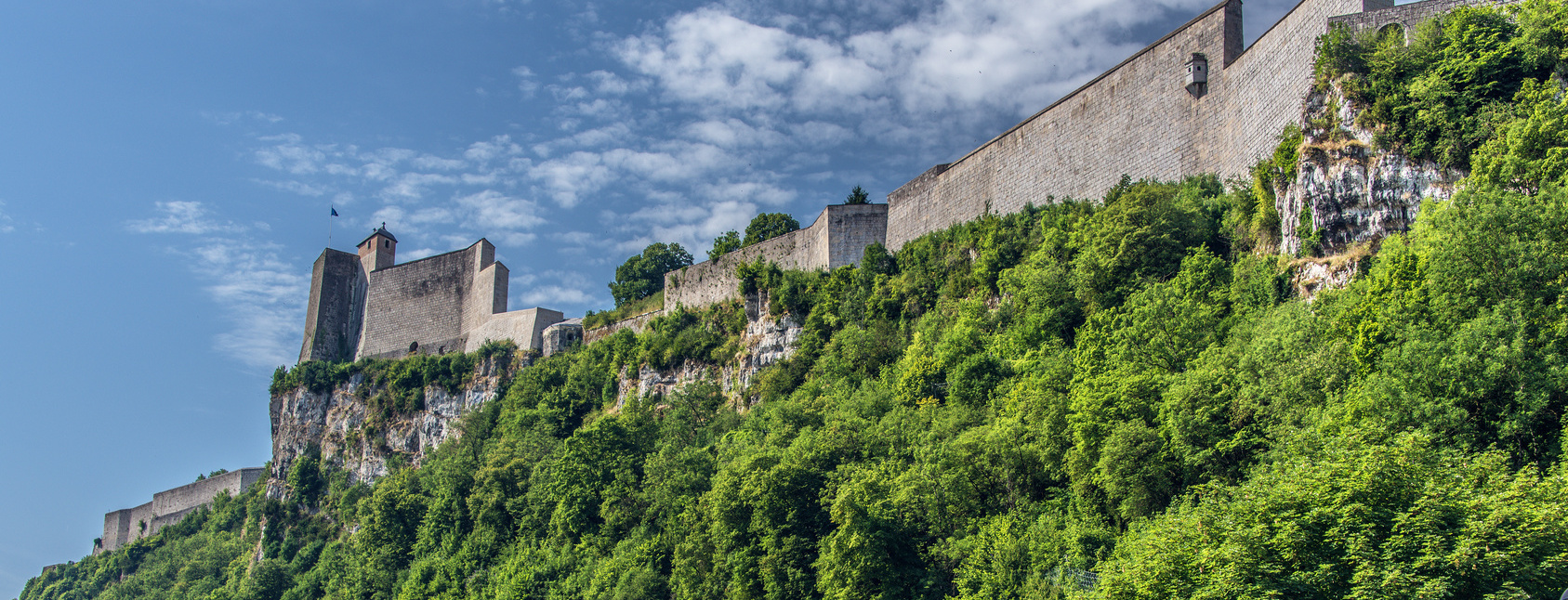


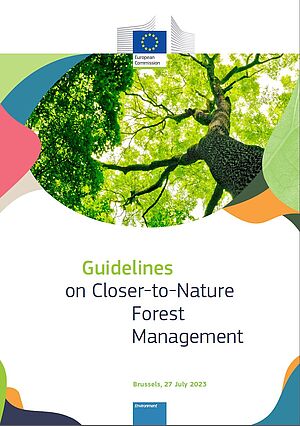
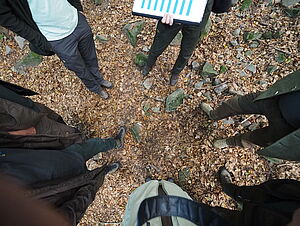
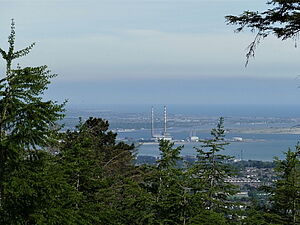
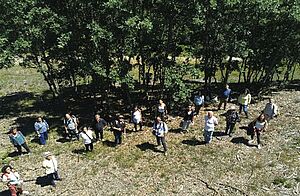
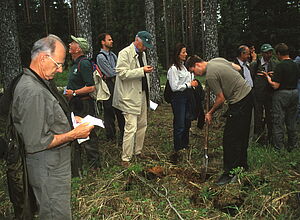

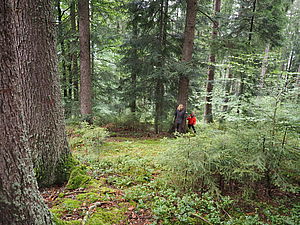
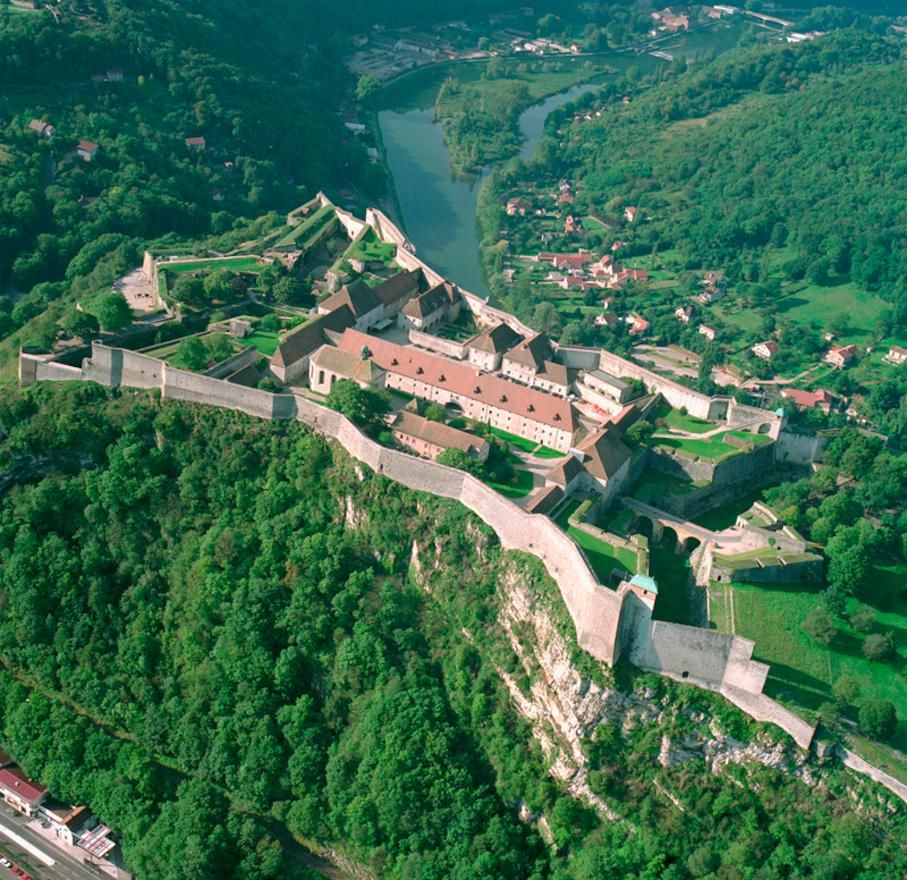
About 700 participants from 25 nations accepted the invitation to the 1st European Pro Silva Congress in Besancon, the self-proclaimed "green city" of France.
Pro Silva, founded in 1989 in Slovenia, propagated by its national working groups the near-natural management of the forest.
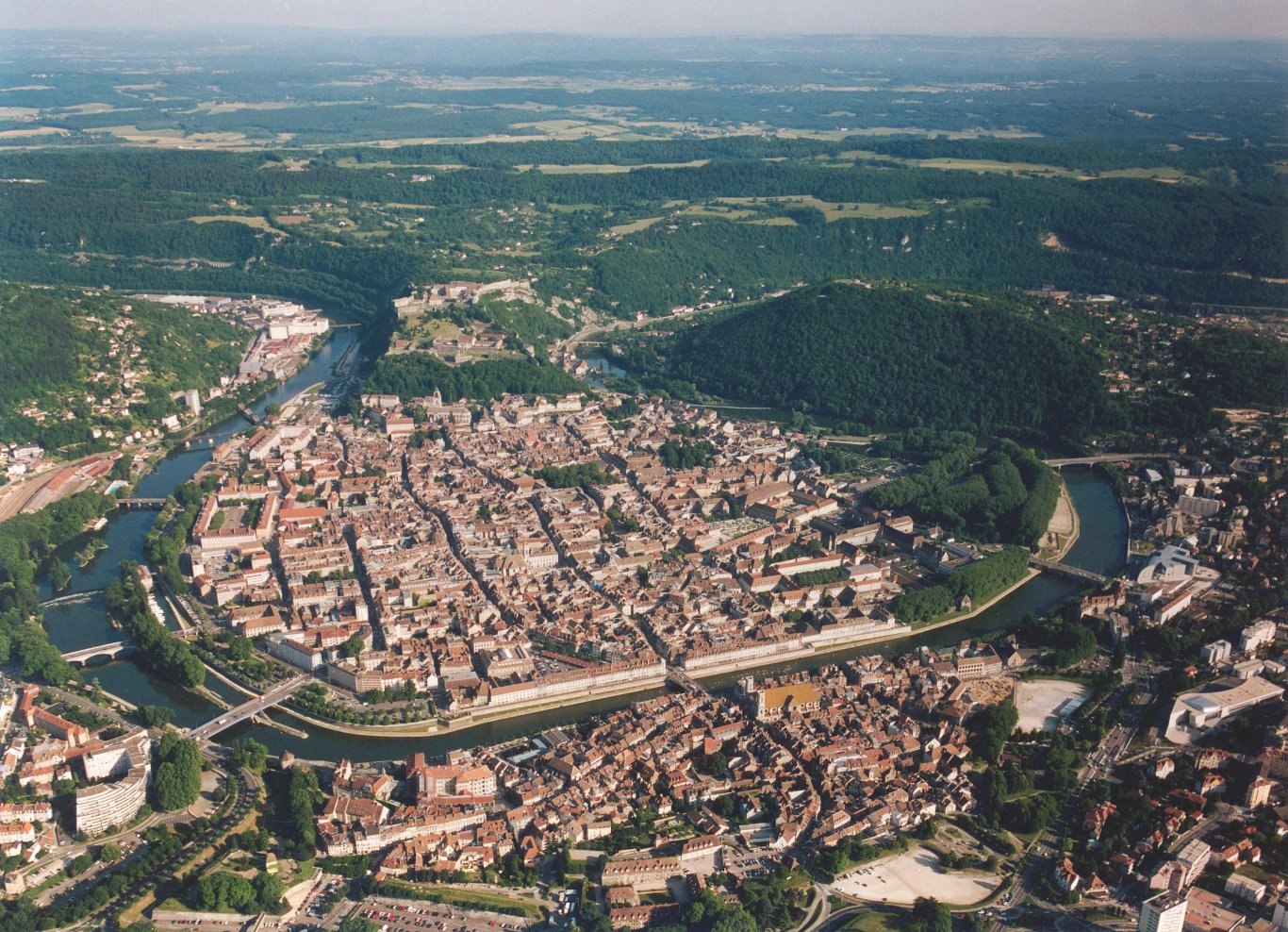

Professor Gérard Siegwalt, moral theologian at the University of Strasbourg, lectured on ethical considerations concerning a challenge of our time: The use of the forest.
Forest management is not only a technical question in the sense of professionalism by forestry experts, but also a philosophical one, since the management of the forest not only has to do with nature, but also human society in their relationship with nature. In view of the crisis of the forest, which also has a crisis of expertise and of thinking, the question arises a new skill and a new philosophy, both of which are better suited to the forest and thus also to society and the economics are in tune. Only the technical expertise and the philosophical consideration with regarding the forests and their management lead to ethical responsibility, vice versa it urges them to create a new professional practice and to conceive a new philosophy, that are better adapted. Two opposing concepts of forest use were compared by Prof. Siegwalt:
From the forest crisis, the environmental crisis and the economic crisis, which are interrelated, the necessity of a change of attitude arises with regard to the productivist mentality or the productivist paradigm of forest use. A necessity that is supported by the state of nature itself imposed can be. The change of opinion concerns the two poles of ecology and economy and therefore has to take care of the nature compatibility and human compatibility (criterion of justice), because any excess that comes with is incompatible with nature and the forest, ultimately incompatible with humans.

were developed by Professor Dr. Hans-Jürgen Otto on the basis of the "Mosaic Cycle Theory”. He pointed out that in from humans untouched primeval forests there are no forest structures, which are particularly "natural" or others that are particularly "against nature." The rules for a natural silviculture can therefore be not even a simple, always and universally valid mission statement, because of the very different forest regions and forest communities. What is decisive is that most forests on group formation and gap dynamics strive for structural states and that over such mosaic structures higher stability and elasticity compared to faults are reached. The economist doesn't have to have ambition, the large-area interference - even if this occurs in nature - through the imitating clear-cutting. The manager should rather imitate processes, which have a higher promise a high degree of elasticity and stability, so species-rich, mixed forests with a variety of forest structures.
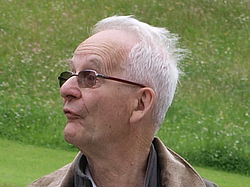
The near-natural forest management was characterised by Brice de Turckheim, President the Pro Silva European Association, as a forest management strategy, which views the forest as an ecosystem and through optimal utilization of the forces of nature and ecological laws, that its socially relevant functions are fulfilled sustainably.
The ecosystem is to be created by mixing of local tree species, under certain conditions even of non-native tree species, permanently preserved or improved. Through individual care and education of the individual trees hight standing volumes with a high proportion of valuable wood achieved. The rejuvenation takes place over a long rejuvenation periods and under crown cover (shield) to minimise maintenance costs.
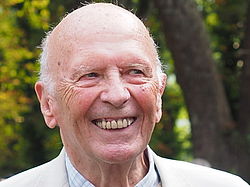
Over 50 years of experience in natural forest management using the example of a mountain forest area in Slovenia, reported forest director Hubert Dolinšek. After clear-cutting, litter use and extensive grazing had to benefit from the most unfavourable conditions are going out. From 1952 on the standing volume in the forests could be increased by 2 fm/ha annually. Clear-cutting has been banned, the impact mainly through care interventions and selective thinning achieved. The schematic transfer of the single tree selection system (plundering) of the Dinarides has proven to be ineffective. Today the selection thinning in all development phases and the consequent application of the care as principle became a matter of course. The standing volume increased since 1945 from 180 to 280 fm/ha. The rejuvenation will take place today 80 % as a free of charge consequence of care interventions.
The excursions led to the traditional single tree selection (“Plenterwald”) areas of the High Jura and into the deciduous mixed forests of the Voge (Vosges foothills). In private and communal forests of the high Jura are many of fir dominated single tree selection forests came out from former pasture forests.
Many excursion participants were surprised the low latent standing volume of 200 to 300 fm/ha (depending on the location), but which to maintain the “plenter” balance is required. The former beech middle forests of the Voge mountains are under transformation since 1950 into light, irregular structured high forests with target diameter harvesting.
Dr. Georg Frank (1993, published in the Austrian Forest Magazine ÖFZ 12/1993 – page 31)